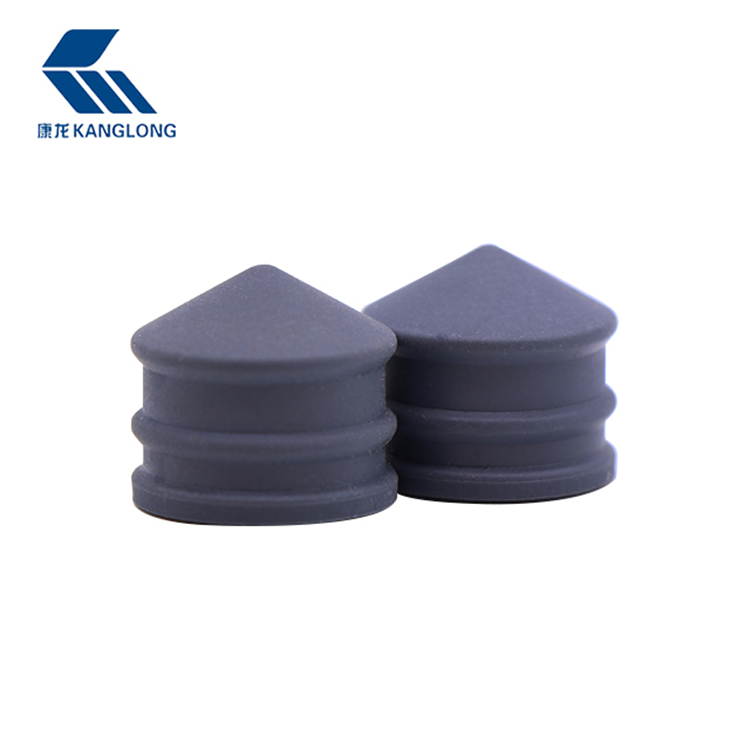The use of Medical Butyl Rubber Stoppers in the pharmaceutical industry is crucial, particularly in the packaging of injectable medications. These stoppers are designed to provide a secure seal for vials, syringes, and other containers, ensuring the sterility and safety of the medication. One specific application of Medical Butyl Rubber Stoppers is in prefilled flush syringes, which are used for a variety of medical purposes, including the delivery of fluids or medications to patients.

1. Chemical Compatibility
One of the important material requirements for Medical Butyl Rubber Stoppers is chemical compatibility. The rubber must be able to resist interaction with the medication or fluid contained in the prefilled syringe. Chemicals such as solvents, preservatives, and active pharmaceutical ingredients (APIs) may interact with the stopper material, potentially bring about the degradation of both the stopper and the drug.
Medical Butyl Rubber Stoppers are commonly chosen for their high resistance to chemical attack. Butyl rubber, a synthetic rubber made primarily from isobutylene, is known for its low permeability to gases and water, making it highly suitable for packaging applications. The material is particularly resistant to oils, acids, and bases, which ensures that it does not compromise the stability or efficacy of the drug contained in the prefilled flush syringe.
Moreover, Medical Butyl Rubber Stoppers must be tested for compatibility with the specific medications that will be used in prefilled syringes. This testing typically includes the evaluation of extractables and leachables—substances that may migrate from the rubber into the drug formulation—ensuring that the stopper does not release harmful or undesirable compounds into the syringe.
2. Sterilization Resistance
Another key requirement of Medical Butyl Rubber Stoppers is the ability to withstand sterilization processes without compromising their integrity. Prefilled flush syringes are typically sterilized to ensure they remain free of microorganisms and other contaminants. The sterilization process may involve autoclaving, gamma irradiation, or ethylene oxide (EO) sterilization, all of which can have different impacts on the stopper material.
Medical Butyl Rubber Stoppers must be resistant to these sterilization methods while maintaining their physical properties. Butyl rubber is well-suited for sterilization because of its ability to retain flexibility and strength even after exposure to high temperatures, radiation, or chemicals. However, careful consideration must be given to the specific sterilization method used to ensure that the stopper does not degrade, become brittle, or lose its sealing properties.
In particular, the rubber must not lose its ability to form an effective seal after sterilization. This is essential to maintain the sterility of the prefilled syringe and to prevent leakage or contamination of the drug. Additionally, the stopper material must not impart any undesirable odors, colors, or tastes to the syringe contents, which could occur if the material degrades during sterilization.
3. Mechanical Properties
The mechanical properties of Medical Butyl Rubber Stoppers are critical to ensuring that the stopper can perform its function effectively under normal use conditions. The stopper must have the right balance of hardness, elasticity, and tensile strength to create a secure seal while still being easy to insert and remove from the syringe or vial.
For prefilled flush syringes, the stopper must exhibit sufficient elasticity to maintain a reliable seal over the life of the product. However, it should not be so soft that it deforms or leaks under pressure. The stopper should also have good tear resistance to prevent damage during insertion into the syringe or when subjected to external forces, such as during transportation or storage.
Another important mechanical consideration is the stopper's ability to compress and expand without breaking or losing its sealing capabilities. Butyl rubber is ideal for this application because it exhibits high resilience and can effectively return to its original shape after being compressed. This is particularly important in ensuring that the stopper can maintain its seal even after repeated use or changes in temperature.


 English
English Español
Español


.jpg?imageView2/2/w/500/h/500/format/jpg/q/100)






